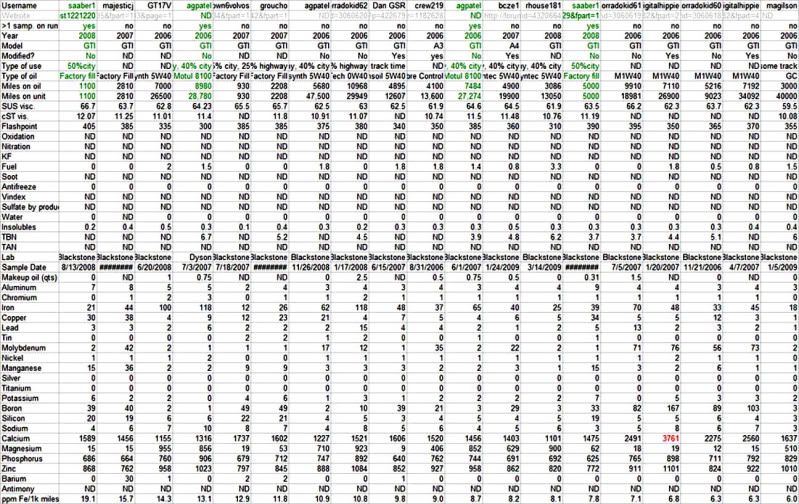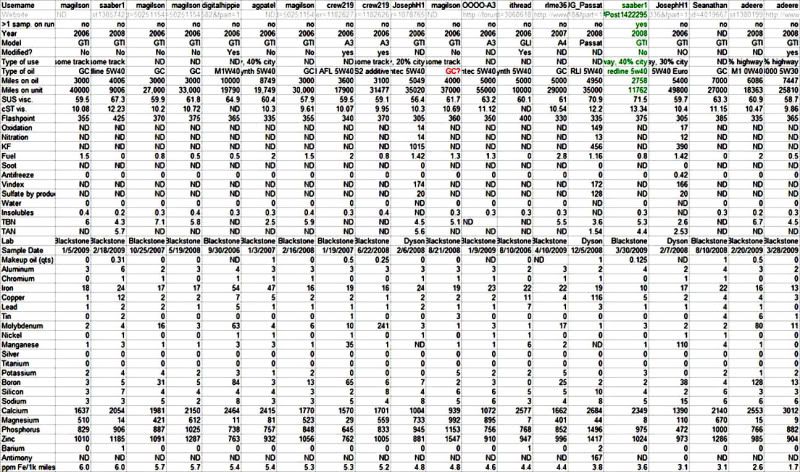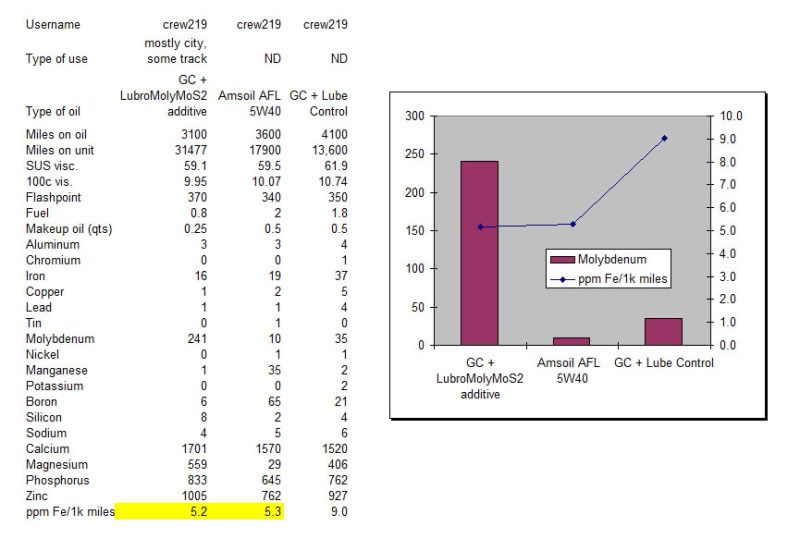Yea sorry re not being able to see full text in some cells. The reason is that to post an image of the excel spreadsheet and have it not be really, really long (and therefore not really readable) it has to use the truncated cells. You can see the full text in Excel file but not in the image. Pm me with your email address if you want me to email you the excel file.
I would love to see that GC UOA here on BITOG when you get it!
There currently are no M1 5W40 UOAs on the database so that would be great if you were to try that and we can add it to the database in the future. Another oil that is missing is Lubromoly 5W40 and Rotella synthetic. I would love to see UOAs of those oils on the database and Shaeffers also. There are also no total/elf UOAs on there yet.
5k looks like a good OCI interval at least according to the UOA database.
I would love to see that GC UOA here on BITOG when you get it!
There currently are no M1 5W40 UOAs on the database so that would be great if you were to try that and we can add it to the database in the future. Another oil that is missing is Lubromoly 5W40 and Rotella synthetic. I would love to see UOAs of those oils on the database and Shaeffers also. There are also no total/elf UOAs on there yet.
5k looks like a good OCI interval at least according to the UOA database.






